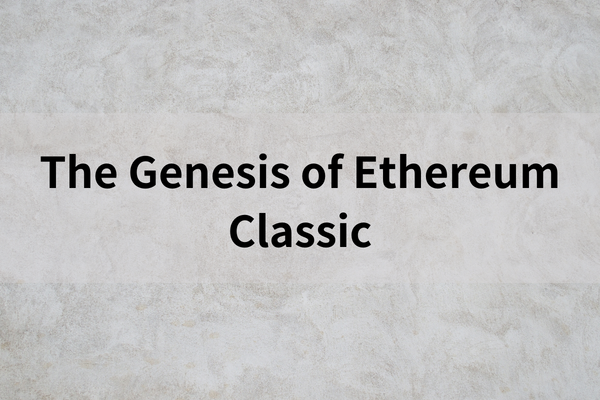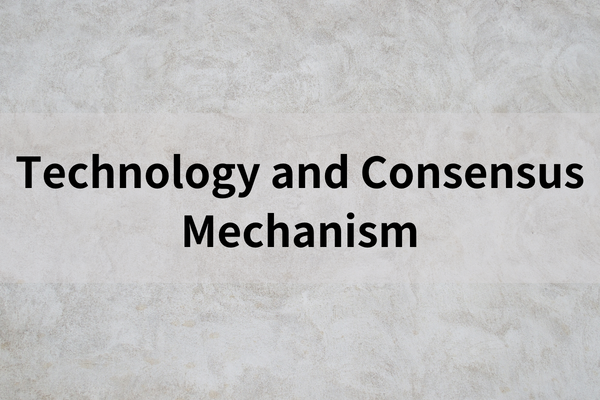Ethereum Classic (ETC) is a prominent cryptocurrency that emerged as a result of the Ethereum hard fork in 2016. The creation of Ethereum Classic was triggered by a contentious debate within the Ethereum community regarding the handling of a significant hack on the Ethereum blockchain. This split resulted in two separate blockchains: Ethereum (ETH) and Ethereum Classic (ETC). In this article, we will explore the history, ideology, technology, and future prospects of Ethereum Classic, highlighting its commitment to decentralization and immutability.
Detailed Articles are here
https://bitcastle.io/column/en/post-10910/
目次
The Genesis of Ethereum Classic

|
Name |
Ethereum Classic |
|
Token Symbol |
ETC |
|
Price |
$2,602,916,747 |
|
Official page |
|
|
|
The genesis of Ethereum Classic can be traced back to the infamous “DAO Hack” in June 2016. The Decentralized Autonomous Organization (DAO) was a groundbreaking initiative that aimed to fund and govern projects on the Ethereum blockchain through a decentralized voting system. Unfortunately, a vulnerability in the DAO smart contract was exploited, leading to the theft of approximately 3.6 million Ether (ETH).
In the aftermath of the hack, the Ethereum community was deeply divided over how to respond. Some advocated for a hard fork to reverse the transactions and recover the stolen funds, while others believed in preserving the immutability of the blockchain, arguing that code is law and that reversing transactions would violate the fundamental principles of decentralization. The community eventually reached a consensus, and the hard fork took place, resulting in Ethereum Classic and the Ethereum we know today.
Ideological Foundations of Ethereum Classic

Ethereum Classic’s core ideology revolves around preserving the original vision of the Ethereum blockchain, emphasizing decentralization, and promoting the principles of “code is law.” The adherents of Ethereum Classic firmly believe that the immutability of the blockchain is paramount and that no external intervention or manipulation should be allowed, regardless of the consequences.
This ideological stance has garnered a passionate following of blockchain purists who view Ethereum Classic as a symbol of resistance against centralization and arbitrary decision-making. They argue that true decentralization necessitates resisting the temptation to change the blockchain’s history, even in the face of adversities like the DAO Hack.
Technology and Consensus Mechanism

From a technical standpoint, Ethereum Classic shares many similarities with its parent chain, Ethereum. It operates on a decentralized, peer-to-peer network, secured by a Proof-of-Work (PoW) consensus mechanism. Miners compete to solve complex mathematical puzzles to add new blocks to the blockchain and validate transactions.
One notable difference between Ethereum and Ethereum Classic lies in their respective monetary policies. While Ethereum has embraced the transition to Proof-of-Stake (PoS) with Ethereum 2.0, Ethereum Classic remains committed to PoW, staying true to its principles of resistance to change and maintaining the original consensus mechanism.
Smart Contracts and Decentralized Applications (DApps)

As a platform, Ethereum Classic supports smart contracts and DApps, enabling developers to build decentralized applications with the ETC token as the native currency. These smart contracts function autonomously, executing predetermined code without the need for intermediaries. This feature has opened the door for numerous innovative projects and use cases on the Ethereum Classic blockchain.
Despite the shared capabilities with Ethereum, the two blockchains have diverged in terms of community and developer support. While Ethereum continues to be the preferred platform for many developers due to its larger user base and resources, Ethereum Classic has managed to carve out its niche, appealing to those who prioritize the preservation of the blockchain’s original values.
Security and 51% Attacks

One of the persistent challenges facing PoW blockchains like Ethereum Classic is the risk of 51% attacks. A 51% attack occurs when a single entity or group controls over 50% of the network’s mining power, allowing them to manipulate transactions and potentially double-spend coins. Ethereum Classic has experienced several such attacks over the years, leading to concerns about its security and viability.
In response to these attacks, the Ethereum Classic community has implemented various measures, including enhanced network security, cooperative mining initiatives, and community-driven efforts to bolster the blockchain’s defenses. Despite these efforts, the specter of 51% attacks continues to cast a shadow on Ethereum Classic’s reputation.
Community and Development

The Ethereum Classic community is made up of passionate advocates who firmly believe in the project’s principles. While the community might not be as extensive as Ethereum’s, it is a tightly-knit group that actively engages in discussions, governance, and decision-making processes. Community members often participate in open-source development, providing support and contributions to the ecosystem.
However, compared to other blockchain projects, Ethereum Classic has faced challenges in attracting significant developer interest and investment. The split from Ethereum in 2016 diluted the developer pool, and some critics argue that the absence of prominent backers and institutional support has hindered Ethereum Classic’s progress.
Future Prospects and Challenges

Looking ahead, Ethereum Classic faces a combination of opportunities and challenges. On the one hand, its commitment to decentralization and immutability continues to resonate with a subset of the blockchain community that values these principles. Additionally, advancements in layer-2 scaling solutions and interoperability with other blockchains could enhance the usability and appeal of Ethereum Classic.
On the other hand, the threat of 51% attacks and the need for broader developer engagement are pressing concerns. Addressing these challenges will require the concerted efforts of the community to bolster the blockchain’s security and attract new talent to drive development and innovation.
Conclusion
Ethereum Classic remains a distinctive and polarizing force in the cryptocurrency space. Its unwavering commitment to the principles of decentralization and immutability has garnered both support and skepticism. As the blockchain ecosystem continues to evolve, Ethereum Classic faces significant challenges in maintaining its relevance and security. However, its dedicated community and ideological foundation continue to ensure that Ethereum Classic remains an essential player in the ongoing conversation about the future of decentralized technology. Only time will tell if Ethereum Classic can sustain its unique vision and make a lasting impact on the blockchain industry.


